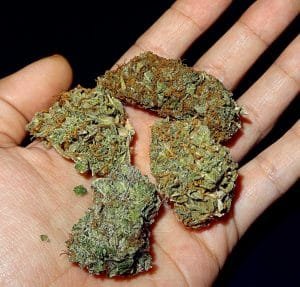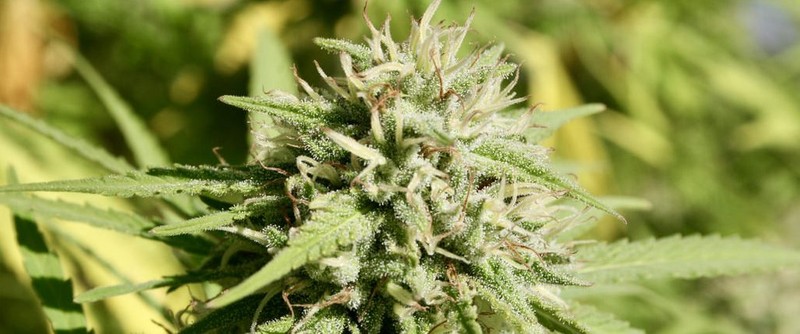This article/website is for informational purposes only and cannot diagnose or treat illness or disease. Medical marijuana should be used under the direction of a licensed healthcare provider. This site contains advertisements. If you click a link and make a purchase, MarijuanaMommy.com may receive a commission.
Although Washington D.C. and 29 American states have embraced cannabis as legal medicine and recreation, cannabis stigma remains. Many well meaning state run medical cannabis programs place barriers between patients and relief due to misconceptions about cannabis flower and smoke.
In 17 “medical” states, you will only find CBD based medical oil with low levels of THC, the main psychoactive chemical found in cannabis. For example, Tennessee only allows the use of medical cannabis oil containing cannabidiol (CBD) with less than 0.9% THC. While this law benefits those who suffer from severe seizures, it excludes more potential patients than it helps.
Furthermore, some medical programs, like New York and Pennsylvania, prohibit smokable cannabis flower. These state’s laws limit legal forms to pills, oils, vaporizers, and other derivatives, but not actual cannabis flower itself.
These restrictions limit the effectiveness of any legal cannabis initiative.
Not only do they drive up the cost of medical cannabis in these markets, and place a difficulty of access on poorer patients, but they sacrifice immense therapeutic value derived from whole plant cannabis in the name of socially ingrained negative feelings and misinformation about the plant, especially with regard to smoke and potential harm.

It seems logical that cannabis smoke would be somewhat harmful to your lungs. Inhaled smoke of any sort should hurt you, right? Wrong. This harmful misconception was born out of a lack of adequate federal research on cannabis.
Research surrounding the plant has been prohibited since the Nixon administration mis-scheduled the substance in lue of a 1971 report by Gov. Raymond P. Shafer of Pennsylvania, which described that, “the weight of the evidence is that [cannabis] does not cause violent or aggressive behavior…No reliable evidence exists indicating that [cannabis] causes genetic defects in man…[cannabis’] relative potential for harm to the vast majority of individual users and it’s actual impact on society does not justify a social policy designed to seek out and firmly punish those who use it.”
Instead cannabis became a criminalized, schedule 1 substance, considered to have no medical value, on par with heroin. This designation set back cannabis research decades, and still affects the way we see cannabis today. This anti cannabis stigma has crept into our most well intended laws, aided by other dubious claims based on poor research methods.

As cannabis research makes up for lost time, more findings emerge that demonstrate cannabis flower’s low relative association with cancer and lung damage.
In a 2012 longitudinal study, Mark Pletcher et al studied association between cannabis exposure and pulmonary function in 5115 subjects over a period of 20 years, (March 26, 1985-August 19, 2006). They failed to find a strong association between cannabis and lung cancer, concluding that “occasional and low cumulative marijuana use was not associated with adverse effects on pulmonary function.”
In direct contrast, The investigators found that low to moderate cannabis use actually increased lung capacity. This is not surprising, as Pletcher states, “In some ways, [cannabis] smoking is really a lot like doing a pulmonary function test.” He speculated that by smoking cannabis you practice, or exercise your lung function, leading to modest increases in capacity.
Pletcher et al also speculated that THC’s anti inflammatory properties may prevent lung irritation from occurring. THC’s anti tumor properties are conjectured to aid the non-association found between cannabis smoke and cancer.
Many early studies captured erroneous associations between cannabis and decreased lung function because they failed to control for other harmful substances. For instance, Hall (2014), a 20 year longitudinal study (1993 to 2013) described that, “[cannabis’] effects on respiratory function and respiratory cancer remain unclear, because most cannabis smokers have smoked or still smoke tobacco.”
Whole plant cannabis contains terpenes which help create its common medical effects. When you limit cannabis forms to derivatives because of anti cannabis stigma, you lose a great number of these terpenes, which lowers the therapeutic value of your cannabis remedies. But why are these terpenes so important, what do they do?

Terpenes are the oil’s inside cannabis flower that produce scent, taste, as well as provide medical effects. When one smokes cannabis, they stimulate their brain’s endocannabinoid system, or ECS.
The ECS works to regulate bodily processes, like mood, appetite, pain sensation, memory, and much more. The ECS has receptors that cannabinoids, like THC and CBD, bind too. Once binded, they produce effects associated with cannabis, like euphoria and pain relief, among others.
The oils from terpenes work to potentiate, or interact with the EC system. Terpenes actually bind to and block certain EC receptors, and these multiple combinations map out cannabis’ psychoactive effects.
We call this interaction an entourage effect. Terpenes work like balancers and communicators. They amplify and moderate cannabis’ effects. Many specific terpenes have specific effects. For example, limonene has been found to reduce destruction of the ras gene, a known cause of cancerous tumor growth. There are many terpenes found in cannabis that provide a multitude of medical effects.
In short, terpenes shape cannabis’ medical effects due to the entourage effect. By limiting cannabis forms to derivatives, states like Pennsylvania and New York lower the therapeutic value their cannabis programs can offer, and cling to erroneous science and measurement with roots in cannabis stigma and phobia.
There are a lot of misconceptions that surround cannabis, and these can take root in the minds of cannabis advocates and DEA agents alike. It’s important to critique state run cannabis programs for these stigmas, so we can do our best to remove them from the future of cannabis legalization.
About the Author
Chris Matich is a professional writer, journalist, and editor living in Pittsburgh, PA. Chris manages an account for Nakturnal.org and blogs for Schenley.net. His writing interests include LGBT+ people/issues, sports writing, and blogging. Chris currently writes about web optimization, blogging practices, medical cannabis, and cannabis lifestyle.
If your wanting cannabis friendly accommodations in Las Vegas you can find them at or 420 friendly hotels Las Vegas page.

